Positive vs Negative Rake Inserts: Which One’s Got Your Back in the Workshop?
Ever stood in front of your lathe, scratching your head over which insert to use? You’re not alone, mate. Let’s cut through the confusion and get to the heart of positive vs negative rake inserts. By the time we’re done, you’ll be slicing through metal like a hot knife through butter.
What’s the Big Deal About Rake Angles?
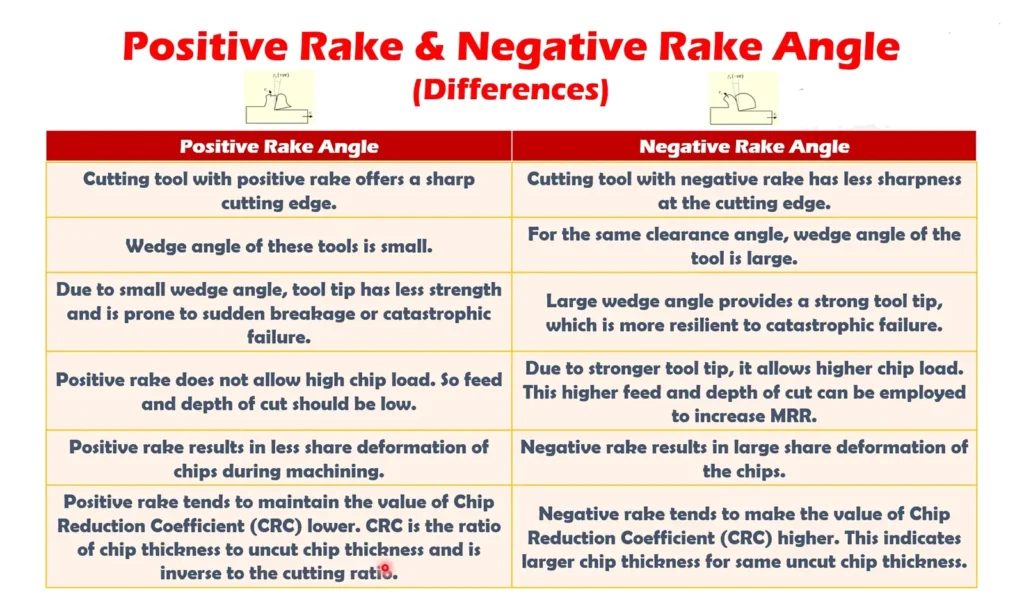
First things first, let’s break down what we’re dealing with here:
- Rake angle: It’s all about how your cutting tool hits the workpiece. Imagine you’re chopping veggies. The angle of your knife as it hits the cutting board? That’s your rake angle.
- Positive rake: Think of it like a sharp knife slicing through butter. The cutting edge is angled away from the direction of the cut, making it easier to slice through the material.
- Negative rake: More like a bulldozer pushing through dirt. The cutting edge is angled towards the direction of the cut, giving it more strength but requiring more force.
Now, why should you care? Because the right rake can make or break your project, literally. It affects everything from the finish of your workpiece to the lifespan of your tool. Get it right, and you’re the workshop wizard. Get it wrong, and you might as well be using a butter knife on a steel beam.
Popular Models: Getting Specific
Let’s talk shop and look at some real-world examples. Here are some popular models of both negative and positive turning inserts that you might come across in your workshop adventures:
Negative Turning Inserts

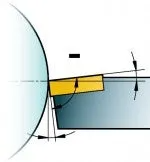
- Double and/or single sided
- High edge strength
- Zero clearance
- First Choice for external turning
- Heavy cutting conditions
- Sandvik Coromant CNMG 120408-PM 4325
- A versatile negative insert great for general-purpose turning
- Works well with steel and stainless steel
- The PM chipbreaker helps with chip control in medium to rough turning
- Kennametal DNMG 150608 KC5010
- Known for its toughness in heavy roughing operations
- Ideal for working with difficult-to-machine materials
- The KC5010 grade offers good wear resistance
- Iscar WNMG 080408-TF IC8150
- A popular choice for both roughing and finishing in steel
- The TF chipbreaker provides good chip control across various feed rates
- IC8150 grade balances wear resistance and toughness
- Mitsubishi TNMG 160408-MA VP15TF
- Versatile insert that performs well in various materials
- MA chipbreaker designed for medium cutting in steel
- VP15TF coating offers good balance of wear resistance and toughness
Positive Turning Inserts
A negative insert has an angle of 90° (0° clearance angle), while a positive insert has an angle of less than 90° (for example, 7° clearance angle). The illustration of the negative style insert shows how the insert is assembled and tilted in the holder. Some characteristics of the two insert types are listed below:

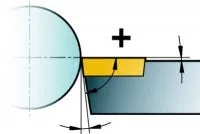
- Single sided
- Low cutting forces
- Side clearance
- First Choice for internal turning and for external turning of slender components
- Sandvik Coromant VBMT 160404-MM 2025
- Positive insert ideal for finishing operations
- Works well with stainless steel and heat-resistant alloys
- The MM chipbreaker is designed for smooth cutting action
- Kennametal CCMT 09T308LF KC5410
- Great for finishing and light-to-medium cutting in steel and stainless steel
- LF chipbreaker provides good surface finish
- KC5410 grade offers wear resistance in high-speed applications
- Iscar DCMT 11T304-SM IC907
- Positive geometry insert good for finishing in various materials
- SM chipbreaker designed for smooth cutting and good surface finish
- IC907 grade suitable for machining stainless steel and heat-resistant alloys
- Mitsubishi VCMT 160404-FV VP15TF
- Versatile positive insert for finishing operations
- FV chipbreaker designed for light cutting and good surface finish
- VP15TF coating offers a balance of wear resistance and toughness
Remember, these are just a few examples from the vast world of turning inserts. Each manufacturer typically offers a wide range of options with various geometries, coatings, and grades to suit different applications.
When choosing an insert, consider:
- The material you’re working with
- The type of operation (roughing, finishing, etc.)
- The cutting parameters you’ll be using
- Any specific requirements for surface finish or chip control
It’s always a good idea to consult the manufacturer’s recommendations and maybe even chat with their technical support. They can often provide insights specific to your application that can help you choose the best insert for the job.
And don’t forget – sometimes the best way to find the perfect insert is good old-fashioned trial and error. So don’t be afraid to experiment a bit in your workshop. Who knows? You might discover a combination that works even better than you expected!
Positive Rake Inserts: The Smooth Operators
Imagine you’re at a party, and there’s this one person who just glides through the crowd, making everyone feel at ease. That’s your positive rake insert. They’re the charming, efficient workers of the insert world.
The Good Stuff:
- Cuts like a dream through softer materials: Positive rake inserts are like that sharp chef’s knife in your kitchen. They slice through softer metals with ease, leaving a clean, smooth cut behind.
- Less cutting force needed: Your machine will thank you for this. Because the edge is angled to ‘slice’ into the material, it requires less force to make the cut. This means less strain on your machine and potentially longer tool life.
- Smoother finish on your workpiece: If you’re after that mirror-like finish, positive rake inserts are your best mate. They tend to produce smoother surfaces, especially on softer materials.
- Great for precision work: When you need to hit those tight tolerances, positive rake inserts have got your back. They offer better control and accuracy, especially in lighter cuts.
- Energy efficient: Because they require less cutting force, positive rake inserts can be more energy-efficient. In a world where every kilowatt counts, this can add up to significant savings over time.
The Not-So-Good Stuff:
- Can be a bit fragile: Like that friend who’s great at parties but can’t handle a rough game of rugby, positive rake inserts can be a bit delicate. They’re more prone to chipping or breaking, especially under heavy loads.
- Not your go-to for tough, hardened materials: Try using a positive rake insert on hardened steel, and you might as well be using a butter knife. They’re just not built for the really tough stuff.
- Can cause vibration in some setups: In certain machining setups, especially with longer overhangs, positive rake inserts can sometimes lead to more vibration. This can affect your surface finish and potentially your accuracy.
- May not be ideal for interrupted cuts: If you’re working on a piece with gaps or holes (interrupted cuts), positive rake inserts might not be your best choice. They can chip or break when they hit those interruptions.
Negative Rake Inserts: The Tough Guys
Now picture that one friend who’s built like a tank. They might not be as smooth, but they can handle anything you throw at them. Say hello to negative rake inserts. These are the workhorses of the machining world.
The Good Stuff:
- Tough as nails, can take a beating: Negative rake inserts are like the bouncer at a rowdy pub. They can handle the tough stuff without breaking a sweat. Got some hardened steel or a heavy roughing operation? These are your go-to guys.
- Perfect for hard materials that would make positive rakes cry: Where positive rake inserts might chip or break, negative rake inserts keep on trucking. They’re ideal for materials like stainless steel, titanium, or hardened steels.
- Ideal for heavy roughing operations: When you need to hog out a lot of material quickly, negative rake inserts are up for the challenge. They can handle higher feed rates and depths of cut without complaining.
- More stable, less chatter: The geometry of negative rake inserts makes them more stable during cutting. This means less vibration and chatter, which can be a game-changer when you’re working with less rigid setups or long overhangs.
- Longer tool life in tough conditions: When the going gets tough, negative rake inserts keep going. Their robust nature means they often last longer than their positive rake cousins when working with hard materials or in challenging conditions.
The Not-So-Good Stuff:
- Needs more cutting force: Your machine might grumble a bit with these. Because the cutting edge is angled into the cut, it requires more force to remove material. This means more power consumption and potentially more wear on your machine.
- Finish isn’t always as smooth: If you’re after that mirror finish, negative rake inserts might disappoint. They tend to leave a rougher surface, especially on softer materials.
- Can generate more heat: All that extra cutting force doesn’t come for free. Negative rake inserts often generate more heat during cutting, which can affect your workpiece and potentially your tool life if not managed properly.
- Not ideal for thin-walled or delicate parts: The higher cutting forces can sometimes deform thin-walled or delicate parts. If you’re working on something that could easily bend or warp, negative rake inserts might not be your best choice.
The Great Debate: Positive vs Negative Rake Angle
So, which one’s better? Well, it’s not that simple. It’s like asking whether a hammer or a screwdriver is better – it depends on what you’re trying to do. Let’s break it down:
When to Go Positive:
- Softer materials: When you’re working with materials like aluminium, brass, or mild steel, positive rake inserts are often the way to go. They’ll give you a smoother finish and require less cutting force.
- When you need a super smooth finish: If surface finish is your top priority, positive rake inserts are your best bet. They tend to leave a smoother surface, especially on softer materials.
- For precision work where every micron counts: The lower cutting forces and better control of positive rake inserts make them ideal for precision work. When you need to hit tight tolerances, these are your go-to.
- When you’re working with a less powerful machine: Because they require less cutting force, positive rake inserts can be a good choice if your machine doesn’t have a lot of horsepower to spare.
- For finishing passes: Even if you’ve been roughing with a negative rake, switching to a positive rake for your finishing passes can give you a better surface finish.
When to Go Negative:
- Harder materials: When you’re up against stainless steel, hardened steels, or other tough materials, negative rake inserts are often the better choice. They can stand up to the abuse these materials dish out.
- Rough cutting operations: Need to remove a lot of material quickly? Negative rake inserts are up for the job. They can handle higher feed rates and depths of cut without breaking a sweat.
- When stability is key: If you’re working with a less rigid setup or you’re dealing with a lot of chatter, the stability of negative rake inserts can be a lifesaver.
- For interrupted cuts: When you’re working on a piece with gaps or holes, the toughness of negative rake inserts makes them less likely to chip or break.
- When you need longer tool life in tough conditions: If you’re working in challenging conditions where tool wear is a major concern, the robustness of negative rake inserts can lead to longer tool life.
Real Talk: Choosing the Right Insert
Here’s the deal: there’s no one-size-fits-all answer. But here are some tips to help you make the right call:
- Know your material: Is it soft and forgiving or hard and stubborn? Softer materials generally play nicer with positive rakes, while harder materials often call for negative rakes.
- Consider your machine: Is it a powerhouse or more of a finesse player? If you’re working with a less powerful machine, you might need to lean towards positive rakes to reduce cutting forces.
- Think about your end goal: Are you roughing it out or going for mirror finish? Your required surface finish can be a big factor in choosing between positive and negative rakes.
- Don’t forget about chip control: Different rakes handle chips differently. Positive rakes tend to produce longer chips, while negative rakes often result in shorter, more manageable chips.
- Assess your setup rigidity: If you’re dealing with a less rigid setup or long overhangs, the stability of negative rakes might be beneficial.
- Consider the cutting parameters: Higher speeds and lighter cuts often work well with positive rakes, while lower speeds and heavier cuts can benefit from negative rakes.
- Think about tool life: If you’re in a production environment where tool changes are a major concern, the durability of negative rakes might be advantageous.
Remember, it’s not just about positive or negative. There’s a whole world of rake angles out there. Sometimes, a neutral rake might be just what you need. Don’t be afraid to experiment and find what works best for your specific situation.
Beyond the Basics: Advanced Considerations
Once you’ve got the hang of positive and negative rakes, there’s a whole world of nuance to explore:
- Chip breakers: Many inserts come with built-in chip breakers. These can significantly affect how your insert performs, regardless of the rake angle.
- Coatings: Various coatings can enhance the performance of your inserts. For example, TiAlN coatings can improve heat resistance, while diamond coatings can be great for non-ferrous materials.
- Insert geometry: Beyond just the rake angle, the overall geometry of the insert can play a big role. Things like nose radius, relief angle, and edge preparation all come into play.
- Cutting speed: Your optimal rake angle might change depending on your cutting speed. Higher speeds often benefit from more positive rakes.
- Workpiece geometry: The shape of your workpiece can influence your choice. For example, thin-walled parts might require a more positive rake to reduce cutting forces and avoid deformation.
FAQs: The Stuff You Really Want to Know
What’s the difference between negative and positive rake?
Positive rake cuts like a sharp knife, requiring less force but can be fragile. The cutting edge angles away from the cut, making it easier to slice through material. Negative rake is tougher, needs more force, but can handle harder materials. The cutting edge angles towards the cut, giving it more strength.
How do I choose the correct turning insert?
Consider your material, machine capabilities, desired finish, and the type of operation (roughing vs finishing). When in doubt, start with a neutral rake and adjust from there. Don’t be afraid to experiment – sometimes the best way to find the right insert is through trial and error.
What are negative rake inserts?
They’re the tough guys of the insert world. Great for hard materials and rough cutting, but need more power and might not give you the smoothest finish. They have a cutting edge that’s angled towards the direction of the cut, giving them more strength and stability.
What carbide insert do I need?
It depends on your specific job. Consider the material, cutting conditions, and desired finish. Don’t be afraid to experiment with different grades and geometries. Some general guidelines:
- For soft materials and fine finishes: Consider positive rake inserts
- For hard materials and rough cutting: Look at negative rake inserts
- For general-purpose work: Neutral rake inserts can be a good starting point
What’s the best carbide insert for roughing?
For roughing, you often want a negative rake insert. They’re tougher and can handle the heat and stress of heavy cutting. Look for inserts with chip breakers for better chip control. Consider inserts with a larger nose radius for better edge strength during heavy cuts.
The Bottom Line
Choosing between positive and negative rake inserts isn’t just about picking a winner. It’s about understanding your needs and picking the right tool for the job. It’s like choosing between a sports car and a 4×4 – both are great, but for very different purposes.
Remember:
- Positive rake: Your smooth operator for softer materials and fine finishes. Great when you need precision and a mirror-like surface.
- Negative rake: Your tough guy for hard materials and rough cutting. The go-to when you need to hog out material or work with challenging materials.
At the end of the day, the best insert is the one that gets your job done right. Don’t be afraid to mix it up and try different options. Your perfect insert might be waiting just around the corner.
So next time you’re standing in front of your lathe, you’ll know exactly which insert has got your back. Now go out there and make some chips fly! And remember, in the world of machining, there’s no such thing as one-size-fits-all. Keep experimenting, keep learning, and most importantly, keep making awesome stuff.
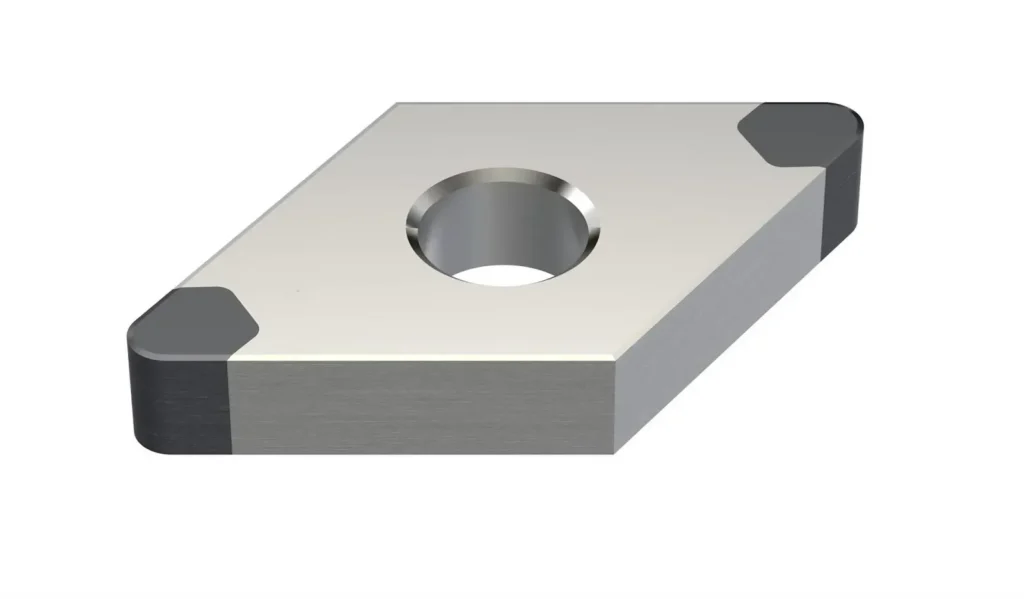
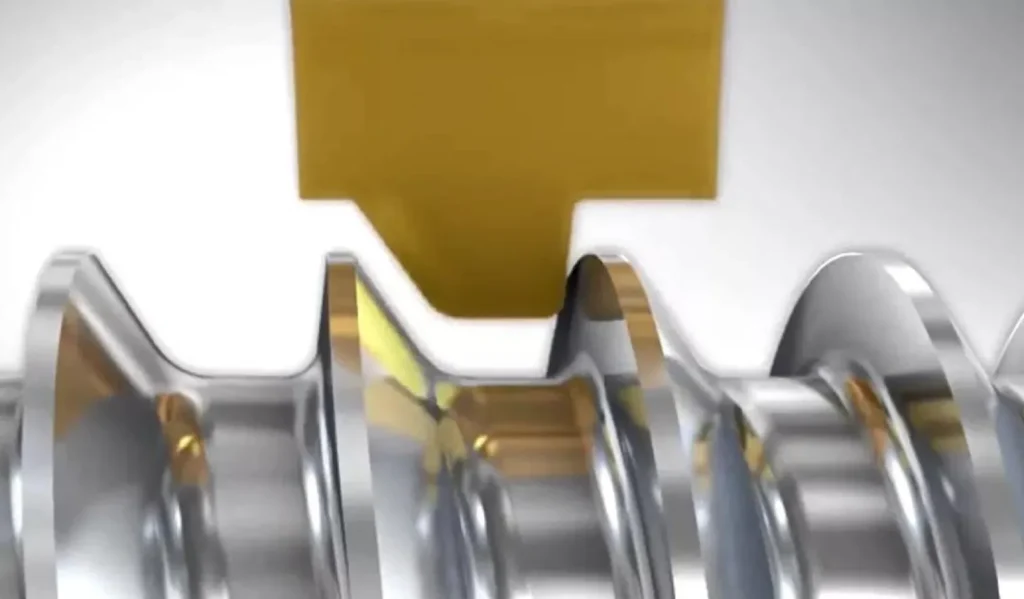
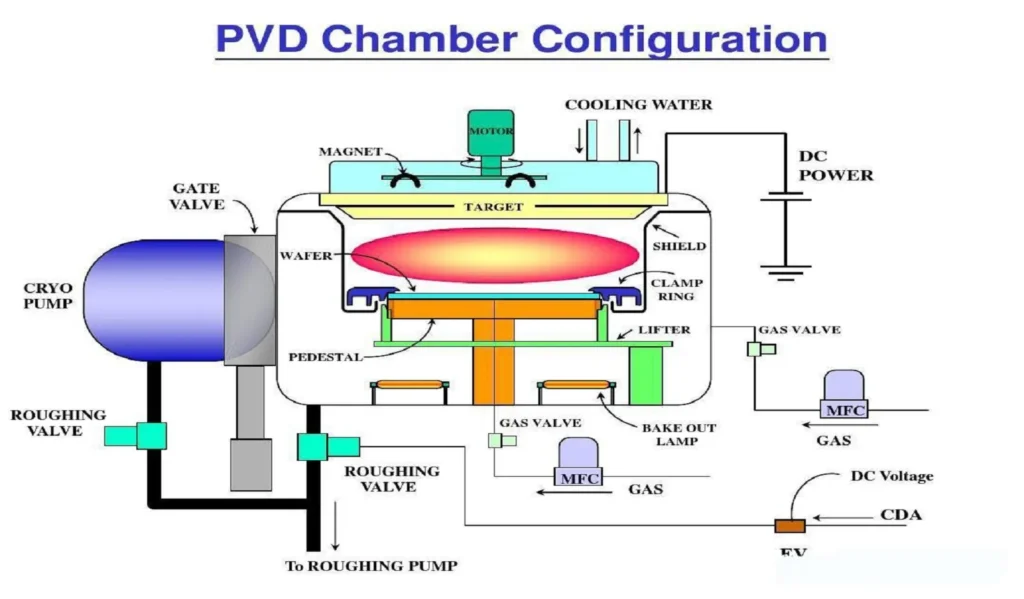

Buonasera,
Mi chiamo Federico Boffi,
Mi sto preparando per un esame di metalmeccanica ed ho trovato una domanda che non riesco a risoondere ed é questo il motivo di questa mail.
” un utensile a spoglia negativa presenta maggiore resistenza alla compressione, alla flessione, o indifferentemente a compressione e flessione ?”
Spero questa email non sia un’invadenza, ma se è cosi Le chiedo sincere scuse.
Grazie del tempo e l’attenzione.
Federico
1. Nella lavorazione meccanica, l’angolo di spoglia si riferisce all’angolo della faccia tagliente dell’utensile rispetto al pezzo in lavorazione. Un angolo di spoglia negativo significa che la faccia dell’utensile da taglio è inclinata in direzione opposta al tagliente. Questo crea una punta dell’utensile più grande e robusta con un angolo di inclinazione maggiore.
2. La maggiore massa di materiale direttamente dietro il tagliente fornisce un supporto superiore, rendendo l’utensile altamente resistente alle forze di compressione incontrate durante la lavorazione. Ciò è particolarmente vantaggioso quando si tagliano materiali duri e fragili che generano elevate forze di taglio. Il carico di compressione è distribuito su un’area più ampia, riducendo lo stress sul tagliente e prevenendo scheggiature o fratture.
3. Anche la sezione trasversale più spessa di un utensile con spoglia negativa contribuisce alla sua maggiore resistenza alle forze di flessione. Durante le operazioni di taglio, l’utensile è soggetto a forze che possono causarne la flessione o la piegatura. La geometria più robusta di un utensile con spoglia negativa offre maggiore rigidità, riducendo al minimo la flessione e garantendo maggiore precisione e stabilità, soprattutto nei tagli pesanti o interrotti.
4. È importante notare che la maggiore resistenza di un utensile con angolo di spoglia negativo si traduce in maggiori forze di taglio. L’utensile sostanzialmente “solca” il materiale anziché tagliarlo come fa un utensile con angolo di spoglia positivo. Ciò richiede più potenza alla macchina e può generare più calore. Pertanto, la scelta tra un utensile con angolo di spoglia positivo e uno negativo dipende dall’applicazione specifica, dal materiale da lavorare e dalle capacità della macchina utensile.